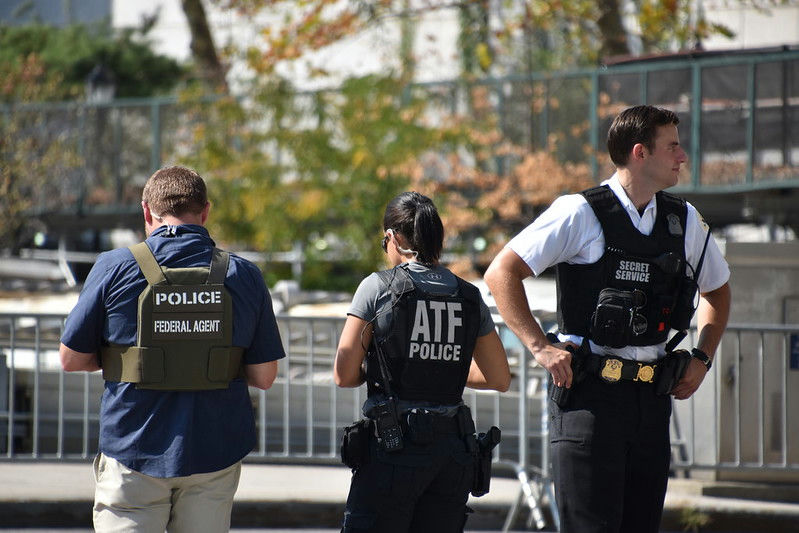What happens when a former high school football player blames the NFL for his mental health issues and takes four lives in a Manhattan skyscraper?
Tragic Shooting and the NFL Connection
A shocking event unfolded on July 29, 2025, when 27-year-old Shane Tamura opened fire at 345 Park Avenue, a Manhattan office building that houses the NFL’s headquarters. Tamura, a Las Vegas casino security worker, killed four individuals, including a police officer and a security guard, and wounded an NFL employee before taking his own life. A note found on Tamura cited the NFL as responsible for his mental health issues, referencing chronic traumatic encephalopathy (CTE), a brain disease linked to repeated head trauma. Although Tamura never played in the NFL, his time playing high school football a decade ago was enough for him to blame the league for his suffering.
The notion of a person taking such drastic measures over perceived grievances with a sports league is a grim reminder of the complex relationship between mental health and sports-related injuries. Shane Tamura’s actions have not only left families grieving but also reignited the debate over CTE and institutional responsibility in sports. The NFL, having faced numerous lawsuits and public scrutiny over the years for allegedly downplaying brain injury risks, finds itself once again at the center of controversy.
The Broader Issue of CTE and Mental Health
CTE, a degenerative brain disease associated with repeated head trauma, has been a topic of concern, particularly in contact sports like American football. The NFL has faced lawsuits and public backlash for allegedly minimizing the risks of brain injuries for decades. The tragic events involving Tamura highlight the ongoing societal impact of the NFL’s concussion crisis and the urgent need for comprehensive mental health support systems for athletes at all levels. While Tamura’s claim of having CTE is unverified, his actions reflect a broader issue that continues to haunt the sports industry.
Lefties and Righties when they learn Midtown Manhattan shooter Shane Tamura was a nonpartisan independent who was angry at the NFL pic.twitter.com/Dxc3gQsign
— Bruno Sarducci

(@dudeonthebay) July 29, 2025
The timeline of events leading to this catastrophe began on the morning of July 29, when Tamura entered the building and opened fire in the lobby before proceeding to the 33rd floor. His intended target was the NFL headquarters, but due to a navigation error, he attacked elsewhere in the building. Authorities confirmed Tamura’s identity the following day, revealing his mental health struggles and the contents of his note.
Impact and Implications
The immediate aftermath of this tragedy has led to heightened security at NFL headquarters and similar high-profile locations. Victims’ families are left with the trauma and loss, while the public grapples with renewed debates over gun violence, mental health, and institutional accountability in sports. The incident could potentially lead to increased scrutiny and litigation against the NFL regarding CTE and player safety.
In the long term, this event may prompt policy changes in building security and mental health interventions for former athletes. The broader societal conversation about the intersection of sports, mental health, and violence is likely to continue, with potential ripple effects across other contact sports and their governing bodies.
Calls for Action and Reflection
Experts emphasize the need for better mental health support systems for athletes at all levels, not just professionals. The NFL’s history of downplaying concussion risks and the slow pace of reform has been criticized by scholars and legal analysts alike. This incident serves as a stark reminder of the consequences of ignoring the mental health needs of athletes and the responsibility of institutions to address these issues effectively.
POV: CNN after realizing NYC sh
ter Shane Tamura isn’t white. pic.twitter.com/9S0K23cAQ9
— The Outlaw Patriot (@OutlawPatriotX) July 29, 2025
As the investigation continues, focusing on Tamura’s mental health history, motives, and weapon acquisition, the NFL and other sports leagues are likely to face increased pressure to address brain injury risks. The conversation around CTE, mental health, and institutional responsibility must evolve to prevent such tragedies from occurring in the future.
Sources:
Click this link for the original source of this article.
Author: Editorial Team
This content is courtesy of, and owned and copyrighted by, https://www.conservativecardinal.com and its author. This content is made available by use of the public RSS feed offered by the host site and is used for educational purposes only. If you are the author or represent the host site and would like this content removed now and in the future, please contact USSANews.com using the email address in the Contact page found in the website menu.








